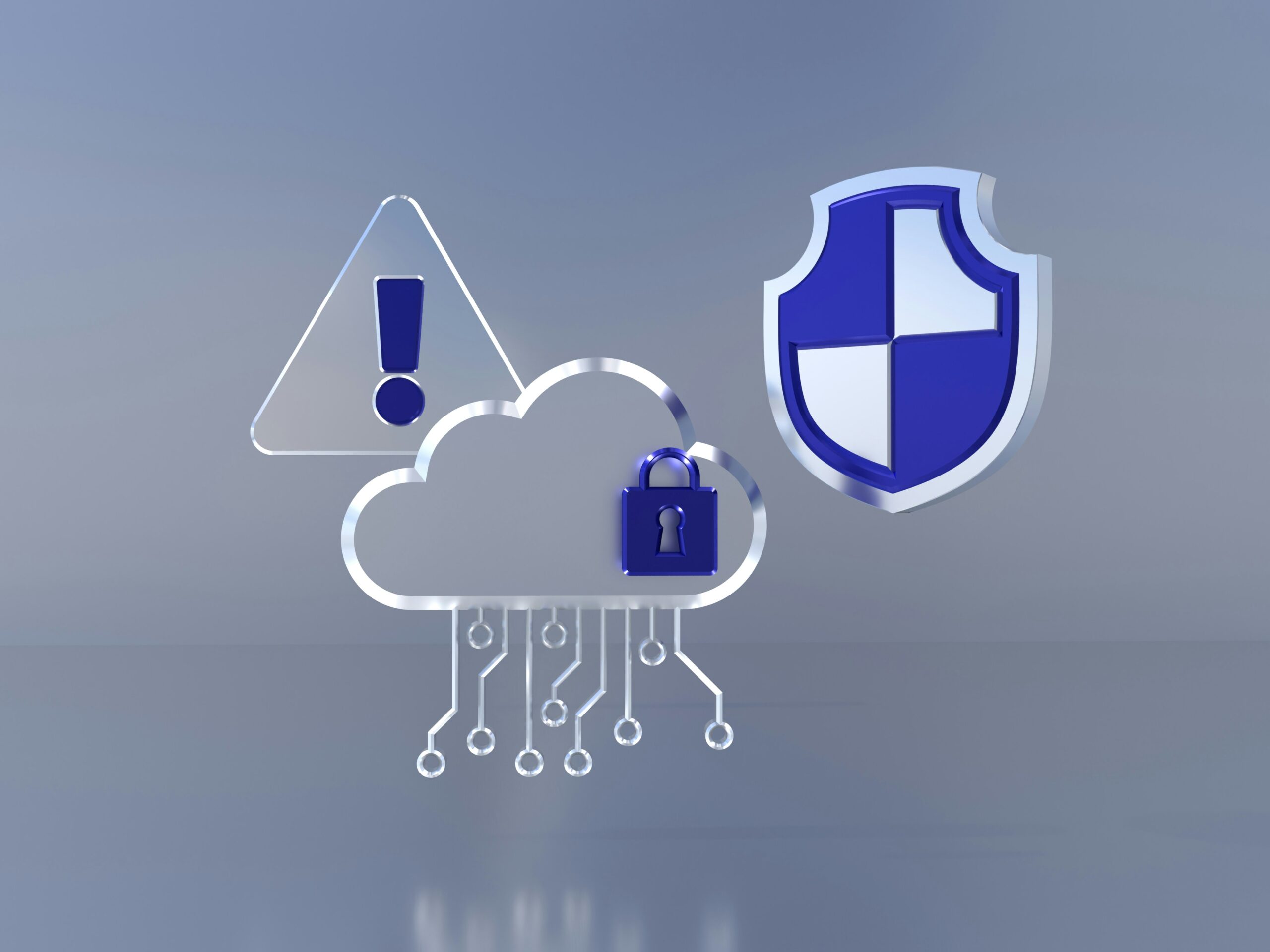Data breaches pose a significant threat to businesses of all sizes.
From small businesses to large corporations, no entity is immune to the risk.

The consequences of a data breach can be severe, impacting both financial stability and reputation. For startups and small businesses, a single data breach can even be catastrophic.
This article aims to provide a comprehensive guide on data breach prevention strategies. The design helps small business owners, IT managers, and startup founders navigate the complex landscape of cybersecurity.
By understanding and implementing these strategies, you can significantly reduce the risk of a data breach and ensure the security of your business’s sensitive data.
Stay with us as we delve into the top strategies for preventing data breaches.
Understanding the Risks of Data Breaches
Data breaches are incidents where unauthorized individuals gain access to confidential data. This data often includes sensitive personal or financial information.
The risks associated with data breaches are multifaceted. They can lead to financial losses, damage to reputation, and legal consequences.
Here are some key risks associated with data breaches:
- Financial losses due to fraud or identity theft
- Damage to reputation leading to loss of customer trust
- Legal consequences including fines and lawsuits
The Consequences for Businesses and Individuals
For businesses, a data breach can result in significant financial losses. These losses can stem from direct theft, the cost of remediation, and potential fines for non-compliance with data protection regulations.
Moreover, a data breach can severely damage a company’s reputation. Customers may lose trust in the company’s ability to protect their data, leading to a loss of business.
For individuals, the consequences can be equally severe. Personal data exposed in a breach can lead to identity theft, financial fraud, and other forms of cybercrime.
Why Small Businesses and Startups are Prime Targets
Small businesses and startups are often prime targets for cybercriminals. This is because they may lack the resources or expertise to implement robust cybersecurity measures.
Moreover, they often hold valuable data, making them attractive targets.
Finally, cybercriminals may perceive small businesses and startups as easier targets due to their size. However, this underestimation can be costly, as the impact of a data breach can be devastating for a small business or startup.
Key Strategies for Data Breach Prevention
Preventing data breaches requires a comprehensive approach. This approach should encompass technology, processes, and people.
The following sections will delve into key strategies for data breach prevention. These strategies can help businesses of all sizes protect their data and maintain the trust of their customers.
Regular Security Audits and Risk Assessments
Regular security audits and risk assessments are crucial for identifying vulnerabilities. These audits can reveal weaknesses in your IT infrastructure that could be exploited by cybercriminals.
Risk assessments, on the other hand, help you understand the potential impact of a data breach. They can guide you in prioritizing your cybersecurity efforts.
Here are some key steps in conducting security audits and risk assessments:
- Identify and classify assets
- Identify threats and vulnerabilities
- Assess potential impact and likelihood of threats
- Prioritize risks and develop mitigation strategies
Employee Training and Cybersecurity Awareness
Employees are often the weakest link in a company’s cybersecurity defenses. Therefore, employee training and cybersecurity awareness are essential for preventing data breaches.
Training should cover basic cybersecurity best practices. It should also include how to recognize and respond to common cyber threats, such as phishing attacks.
Here are some key elements of effective employee training and cybersecurity awareness programs:
- Regular training sessions
- Phishing simulations
- Clear guidelines on safe internet use
- Regular updates on new threats and security practices
Strong Password Policies and Multi-Factor Authentication
Strong password policies and multi-factor authentication (MFA) are fundamental to preventing unauthorized access. Password policies should require complex, unique passwords that are changed regularly.
MFA adds an additional layer of security. It requires users to provide two or more forms of identification before accessing sensitive data.
Here are some key elements of strong password policies and MFA:
- Password complexity requirements
- Regular password changes
- Use of MFA for all sensitive accounts
- Regular audits of password and MFA practices
Encryption and Data Protection Measures
Encryption is a powerful tool for protecting sensitive data. It renders data unreadable to anyone without the correct decryption key.
Data protection measures should also include secure data storage and transmission practices.
Here are some key elements of effective encryption and data protection measures:
- Use of strong encryption algorithms
- Secure storage of encryption keys
- Secure data transmission practices
- Regular audits of encryption and data protection measures
Software and System Updates
Keeping software and systems updated is crucial for patching security vulnerabilities. Cybercriminals often exploit known vulnerabilities in outdated software to gain unauthorized access.
Regular updates should be part of your routine IT maintenance.
Firewall and Antivirus Solutions
Firewalls and antivirus solutions are fundamental defense mechanisms. They can block malicious traffic and detect and remove malware.
These solutions should be kept updated to ensure they can protect against the latest threats.
Access Controls and Network Monitoring
Access controls ensure that only authorized personnel have access to sensitive data. They can significantly reduce the risk of insider threats.
Network monitoring, on the other hand, can detect suspicious activities early. It can alert you to potential breaches before they cause significant damage.
Here are some key elements of effective access controls and network monitoring:
- Clear data access policies
- Regular audits of access controls
- Real-time network monitoring
- Alerts for suspicious network activities
Advanced Data Breach Prevention Techniques
As cyber threats evolve, so too must your data breach prevention strategies. Advanced techniques can provide a more robust defense against sophisticated attacks.
These techniques often involve specialized tools and methodologies. They can help you stay one step ahead of cybercriminals.
Intrusion Detection and Prevention Systems
Intrusion detection systems (IDS) and intrusion prevention systems (IPS) are advanced tools for identifying and blocking cyber threats. IDS monitors network traffic for suspicious activities, while IPS actively blocks potential attacks.
Here are some key elements of effective IDS and IPS implementation:
- Regular updates to threat databases
- Real-time monitoring and blocking capabilities
- Integration with other security systems
- Regular audits of IDS and IPS effectiveness
Penetration Testing and Vulnerability Management
Penetration testing involves simulating cyber attacks to uncover weaknesses in your IT infrastructure. Vulnerability management, on the other hand, involves identifying, assessing, and mitigating vulnerabilities.
Here are some key elements of effective penetration testing and vulnerability management:
- Regular penetration testing by qualified professionals
- Use of automated tools for vulnerability scanning
- Prioritization of vulnerabilities based on potential impact
- Timely patching or mitigation of identified vulnerabilities
Data Loss Prevention Tools and Strategies
Data loss prevention (DLP) tools monitor and control data transfer within your network. They can prevent unauthorized exfiltration of sensitive data.
Here are some key elements of effective DLP implementation:
- Clear policies on data transfer and storage
- Real-time monitoring of data movement
- Alerts for potential data leaks
- Regular audits of DLP effectiveness
Zero Trust Security Model
The zero trust security model assumes no user or system is trusted by default. It requires verification for every access request, regardless of where it comes from.
Here are some key elements of implementing a zero trust security model:
- Strict access controls based on the principle of least privilege
- Use of multi-factor authentication
- Continuous monitoring and logging of network activities
- Regular audits of zero trust implementation
Creating a Culture of Security Within Your Organization
Preventing data breaches is not just about implementing advanced technologies. It also involves fostering a culture of security within your organization.
This culture should permeate every level of your organization, from leadership to frontline employees. Everyone has a role to play in data breach prevention.
The Role of Leadership and IT in Fostering Cybersecurity
Leadership plays a crucial role in fostering a culture of cybersecurity. They set the tone for the organization’s approach to data security.
Here are some ways leadership can promote a culture of cybersecurity:
- Regularly communicate the importance of data security
- Invest in cybersecurity training for all employees
- Encourage employees to report potential security issues
- Lead by example in adhering to security policies
The IT department also plays a key role. They are responsible for implementing security measures and educating employees about them.
Continuous Improvement and Adaptation
Cyber threats are constantly evolving. Therefore, your data breach prevention strategies must also evolve.
Here are some ways to ensure continuous improvement and adaptation:
- Regularly review and update your security policies
- Stay informed about the latest cyber threats and defense strategies
- Conduct regular security audits and risk assessments
- Encourage feedback from employees on security measures
Remember, data breach prevention is an ongoing effort. It requires vigilance, commitment, and a proactive approach.
Frequently Asked Questions:
How to protect against data breaches?
There are several steps you can take to protect against data breaches. First, make sure to implement strong password policies and encourage employees to use unique, complex passwords. Additionally, consider implementing multi-factor authentication for an added layer of security.
Regularly update your software and systems to patch any vulnerabilities that could be exploited by cyber attackers. Encrypt sensitive data both in transit and at rest to protect it from unauthorized access. Train employees on how to recognize and respond to phishing attacks, as these are a common method used by hackers to gain access to sensitive information.
Finally, consider investing in cybersecurity insurance to help mitigate the financial impact of a data breach. By taking these proactive measures, you can help protect your organization from falling victim to a data breach.
How to prevent data breaches in healthcare?
One of the most important steps in preventing data breaches in healthcare is to ensure that all employees are properly trained on cybersecurity best practices. This includes recognizing phishing attempts, using strong passwords, and understanding the importance of keeping sensitive information secure. Regular training sessions and updates on the latest threats can help employees stay vigilant and protect against potential breaches.
Another key aspect of preventing data breaches is to regularly conduct security assessments and audits to identify any potential vulnerabilities in your systems. By staying proactive and addressing any weaknesses before they can be exploited, you can significantly reduce the risk of a breach occurring.
It is also essential to have a robust incident response plan in place in case a breach does occur. This plan should outline the steps to take in the event of a breach, including notifying affected individuals, regulatory authorities, and implementing measures to contain and mitigate the impact of the breach.
By implementing these measures and staying proactive in your approach to cybersecurity, you can greatly reduce the risk of a data breach in your healthcare organization. Remember, prevention is key when it comes to protecting sensitive patient information and maintaining trust with your patients.
Conclusion: The Ongoing Effort to Prevent Data Breaches
In conclusion, preventing data breaches is a continuous and multifaceted effort. It requires a combination of robust security measures, regular audits, employee training, and a culture of security.
While the task may seem daunting, the potential consequences of a data breach make it a necessary endeavor. By implementing the strategies discussed in this article, you can significantly reduce the risk of a data breach and protect your business’s valuable data. Remember, in the digital age, data security is not just an IT concern, but a business imperative.









